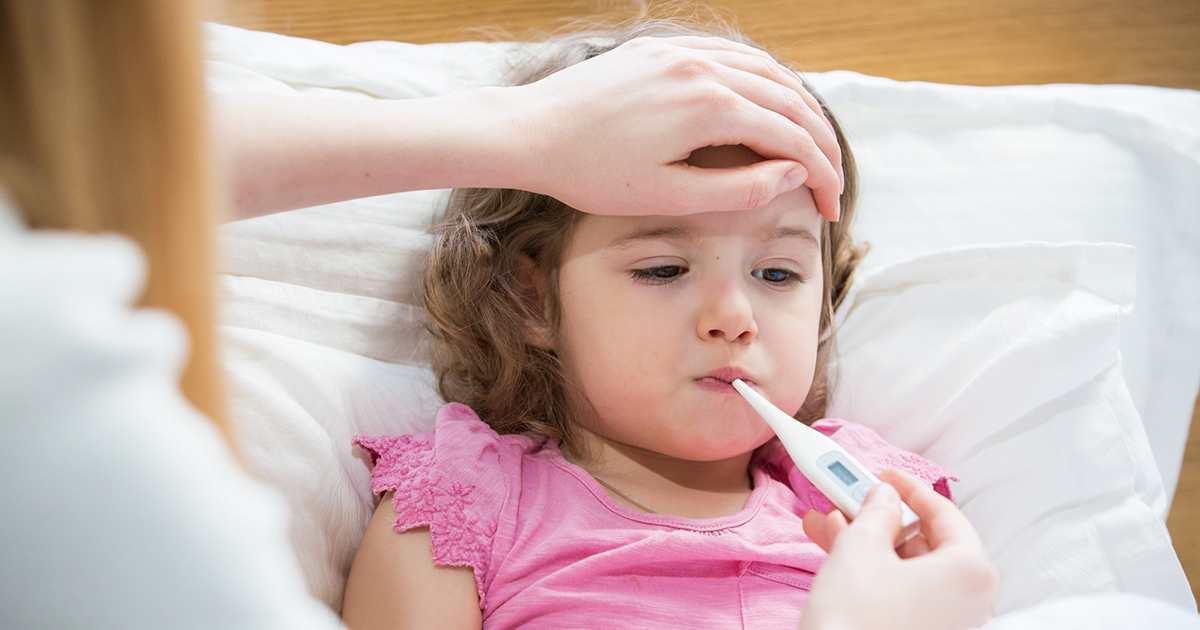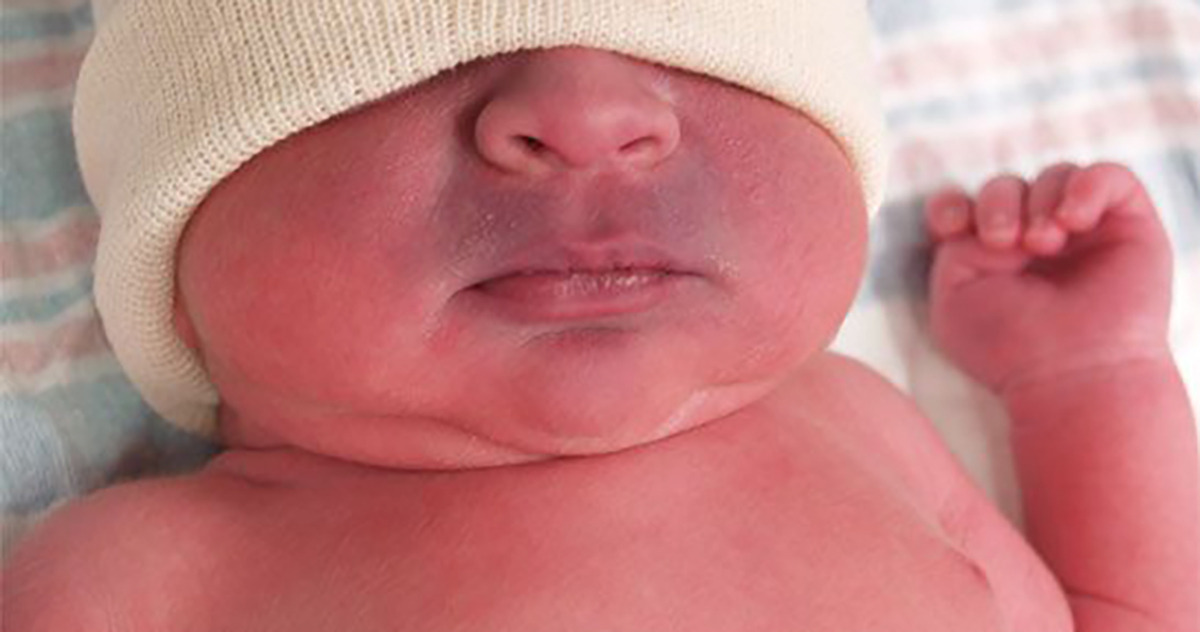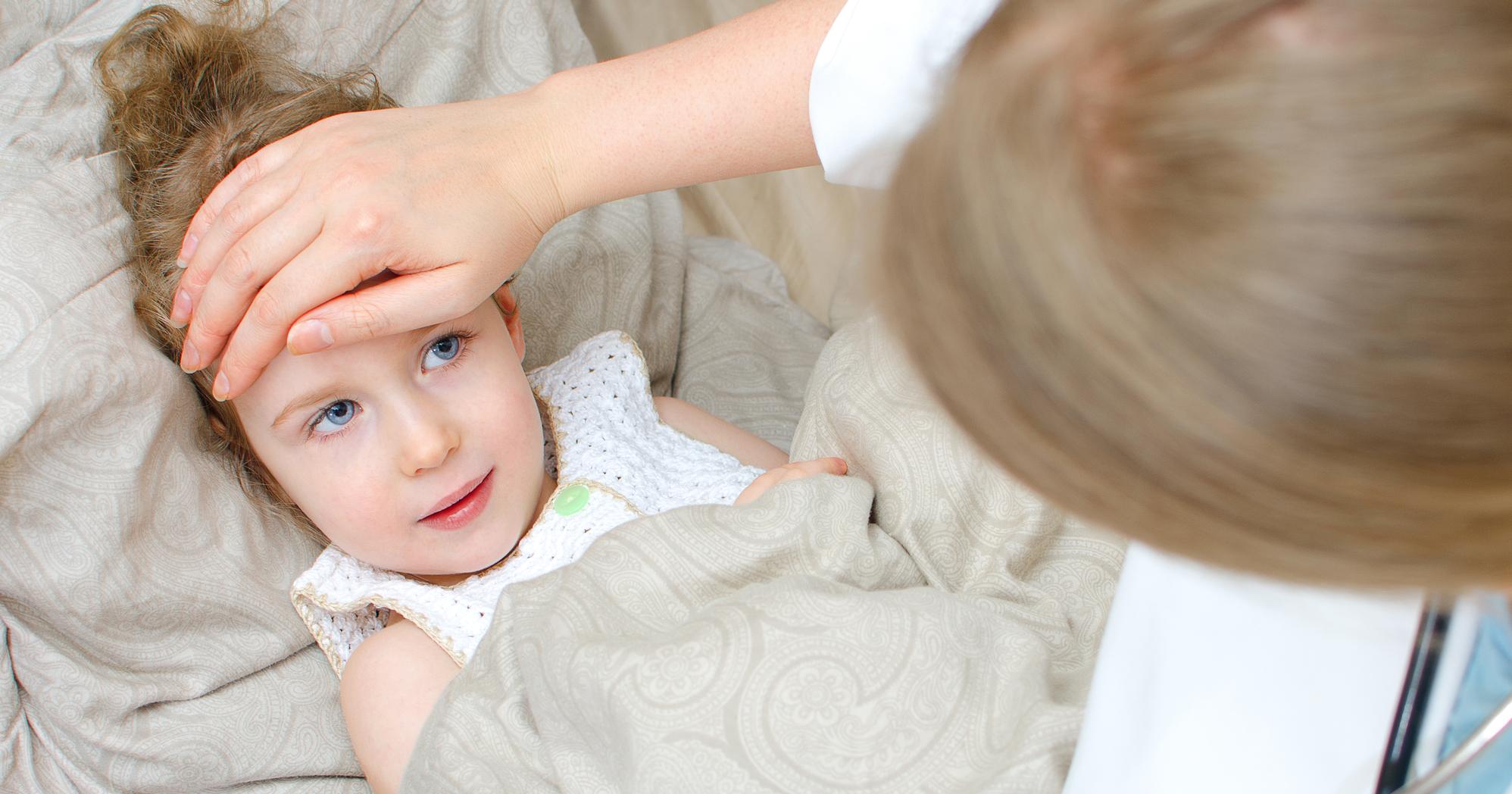Symptoms Of Croup To Watch Out For
Croup is a type of viral infection that is very common among children under five. This illness causes a child's airways to swell, making it difficult for them to breathe. In most cases, croup can be treated at home without any lasting effects. However, it can occasionally be so severe that it becomes potentially fatal. Doctors typically advise parents visit the emergency room if they notice their child is struggling to breathe or has a dangerously high fever. Parents should always make sure to keep a watchful eye out for these five dangerous symptoms of croup.
Fever

A fever is definitely a reason to be concerned if your child has croup, but this does not mean you need to panic any time their temperature goes above the average of 98.6 degrees Fahrenheit. This is only an average temperature, so it is possible for your child's temperature to fluctuate a little bit now and then. You do, however, need to become concerned once it goes above 99.5. The American Academy of Pediatrics suggests you call your baby's doctor if they are under three months old and have a temperature of 100.4 degrees Fahrenheit or more. Older infants between three to six months need medical attention if their temperature goes to 101 degrees Fahrenheit or higher. After six months, any temperature of 103 degrees Fahrenheit or higher is a sign of concern. Though rare, an infant with croup can have a high enough temperature to be in danger. Also, seek medical attention if the heightened temperature lasts for more than forty-eight hours.
Continue for more symptoms of croup to always watch out for.
Common Cold Symptoms

Croup is technically caused by the same family of viruses as what causes the common cold. However, croup is much worse than a typical cold because children's immune systems are still not strong enough to fight it off. Though you do not need to get concerned as soon as your child starts exhibiting common cold symptoms, start monitoring them for other problematic signs of croup if they start seeming like they have a cold. In younger children, detecting cold symptoms can be difficult because they may not be able to tell you about the problem. Be on the lookout for a stuffy nose, a runny nose, constant fussiness, and a refusal to eat. Older toddlers may tell you their head hurts or complain about being tired.
Keep reading for more information on croup symptoms.
Barking Cough

Children with croup often cough because a cough is an automatic reflex when the body feels like something is blocking the airway. In most children, this just sounds like a typical dry cough that comes and goes. If the croup is more problematic, a child might begin to have a barking cough. This symptom does not always appear, but it can occur in rare types of croup, such as spasmodic croup. The unusual symptom happens because the narrowed airways and swelling affect the larynx. A barking cough is sharp, slightly high pitched, and sudden, and some describe it as sounding like a 'crowing' noise as well. Children with this symptom may cough over and over until they struggle to catch a breath in between coughing fits.
Continue reading to get more details on major symptoms to watch out for.
Cyanosis

Cyanosis is the medical name for skin with a slightly blue-tinged appearance. It occurs whenever the tissues near the surface of the skin do not have enough oxygen, so it is a sign a child has poor circulation, or their blood is not entirely oxygenated. If a baby is exhibiting signs of cyanosis, it is essential to take them to the emergency room as soon as possible.
This is one of the most common reasons children with croup are admitted to the hospital. It is a huge cause for concern because it means the child is not getting enough air. Children with cyanosis frequently just get it in the hands and feet, and you may notice the early signs of it if their fingernails and toenails are blue. However, the condition can cause an overall blue cast to appear all over your child's skin. It can be tricky to notice in children with darker or redder skin because it may present as more of a purple or dark brown shade.
Continue for another major symptom of croup to keep an eye out for.
Breathing Issues

Once a child's breathing progresses beyond slight stuffiness or a runny nose, it is time to mention the issue to their doctor. Mild cases of croup may not exhibit any noticeable breathing issues, but if it progresses, airways will become more and more blocked. A child's breathing might start to seem high pitched and noisy because airways are smaller. If croup progresses even more, their breathing might get fast, and they might sound like they are struggling to breathe in. You may notice the skin around the ribs and top of the sternum sucks in. This is a sign your child is inhaling as hard as they can but cannot get enough oxygen. Their neck muscles may also pull in as they labor to breathe. If their breathing is labored enough, you may need to seek emergency medical treatment.
How To Treat Croup

Unfortunately, since croup is a viral infection and not a bacteria, the only real option is to allow the virus to run its course. In the case of croup, the best thing a parent can do for their child is to treat the symptoms until they subside and keep them comfortable. Tretaments for a fever include acetaminophen, ibuprofen, or a cold compress. Use a bulb syringe or a saline nasal flush to clear blocked nasal pasages. Most importantly, keep the child calm. Since croup causes labored breathing, it's easy for a child to panic, which makes the symptoms worse. A cool-mist humidifier can help to ease some symptoms, as can cool fresh air. Follow these tips and the croup should clear up in seven to ten days.